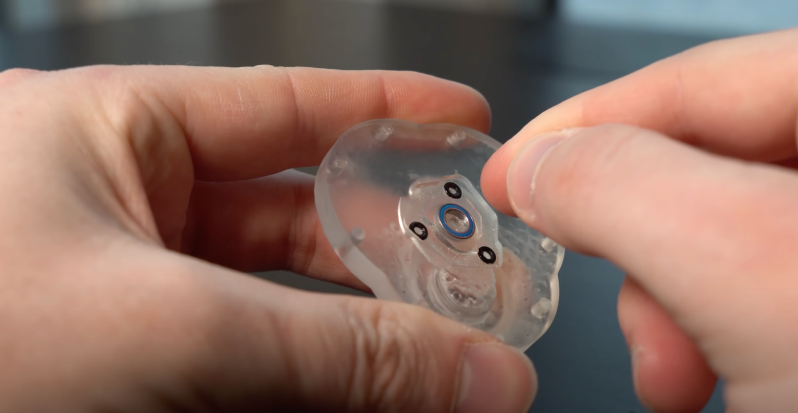Rotary engines such as the Wankel have strange shapes that can be difficult to machine (as evidenced by the specialized production machines and patents in the 70s), which means it lends itself well to be 3D printed. The downside is that the tolerances, like most engines, are pretty tight, and it is difficult for a printer to match them. Not to be dissuaded, [3DprintedLife] designed and built a 3D printed liquid piston rotary engine. The liquid piston engine is not a Wankel and is more akin to an inside-out Wankel. The seals are on the housing, not the rotor itself, and there are three “chambers” instead of two.
The first of many iterations didn’t run. There was too much friction, but there were some positive signs as pressure was trapped in a chamber and released as it turned. The iterations continued, impressively not using any o-rings to seal, but instead sanding each part down using a 1-2-3 block as a flat reference, within 25 microns of the design. Despite his care and attention to detail, it still couldn’t self-sustain. He theorizes that it could be due to the resin being softer than other materials he has used in the past. Not to be left empty-handed, he built a dynamo to test his new engine out. It was a load cell and an encoder to measure speed and force. His encoder had trouble keeping up, so he ordered some optical limit switches.
This engine is a follow-on to an earlier 3D printed air-powered Wankel rotary engine, and we’re looking forward to part two of the liquid piston series. Video after the break.
















> as evidenced by the specialized production machines and patents in the 70s
I want to read more about these machines!
https://www.mazda.com/en/innovation/mazda-stories/mazda/rotary-engine-story-2021-04/
https://youtu.be/lt7HSUipv6o
I really do hope LiquidPiston succeeds. I haven’t put money into it, but some people have suggested it looks like a scam–which is hard to prove negative until they actually have mass market products, which is easier said than done. I’d love to see it in motorcycles and other consumer products. It seems they have military contracts, but that doesn’t prove it’s feasible as a consumer product. After all, the military also built flying Jeeps in the late 50’s, and we definitely aren’t using those now.
I think they may run out of road as everything goes electric, manufacturers are already stopping or massively scaling back development on ICE engines, I can’t imagine there’s many that would stomach the huge cost of devloping a new and unproven design.
There’s some model of car that used tiny Wankel engines and a pyrotechnic gas generator to rapidly retract the front seat belts in a crash. I don’t recall the make and model other than it was European, possibly German.
I’d love to get my hands one one, preferably unused, to remove the pyro charge from so the little engine could be used for something.
Doing some searching, I can find one or the other, but not both. NSU is a German car maker that used Wankel engines in various models, including the Spider and the RO 80. Mercedes is credited with early usage of seatbelt pretensioners, though their initial systems were mechanical and not pyrotechnic.
Volkswagen group had these for a few years in the late 90s to early 2000. Curiously the part itself came from an American airbag company.
https://patents.google.com/patent/US5485970A/en
As a RX-7 owner I simply love anything related to wankel engines! Doesn’t matter that they’re problematic and inefficient, they have always intrigued me